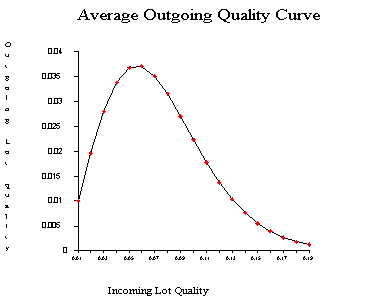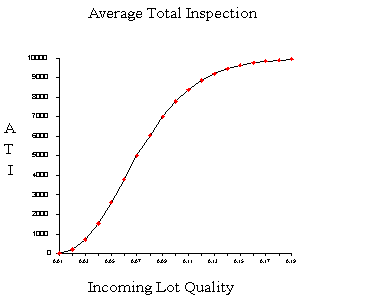6.2. Test Product for Acceptability: Lot Acceptance Sampling
6.2.2. How do you Choose a Single Sampling Plan?
6.2.2.2. |
Choosing a Sampling Plan with a given OC Curve |

It is instructive to show how the points on this curve are obtained,
once we have a sampling plan
We assume that the lot size
The probability of observing exactly
The probability of acceptance is the probability that
In order to design a sampling plan with a specified OC curve one needs
two designated points. Let us design a sampling plan such that the probability
of acceptance is
If we are willing to assume that binomial sampling is valid, then the
sample size,
We can also calculate the
Assume all lots come in with exactly
For example, let
A plot of the

From examining this curve we observe that when the incoming quality
is very good (very small fraction of defectives coming in) then the outgoing
quality is also very good (very small fraction of defectives going out)
When the incoming lot quality is very bad, most of the lots are rejected
and then inspected. The "duds" are eliminated or replaced by good ones,
so that the quality of the outgoing lots, the
The maximum ordinate on the
From the table we see that the
One final remark: if
Calculating the Average Total Inspection
What is the total amount of inspection when rejected lots are screened?
If all lots contain zero defectives, no lot will be rejected.
If all items are defective, all lots will be inspected, and the
amount to be inspected is
Finally, if the lot quality is
Let the quality of the lot be
Setting
A plot of


